
Several kits, such as these bulldogs, come in a selection of colors. (Adorable bulldog model not included!)
Photo courtesy of Low Poly Crafts
The Canadian couple behind Low Poly Crafts is taking low poly art higher, creating 3D do-it-yourself kits that are fun, artistic, and relaxing to make. You can be a big game hunter using only paper and glue to create such critters as a deer, moose, fox, squirrel, etc., or, if animals aren’t your thing, a 3D cactus, heart, skull and more.
The roots of the business grew from Ocneanu’s search for something to “keep my hands busy and my mind occupied” after a tough romantic break-up. He found a German architect online who offered free PDFs that, when printed, cut, and pieced together, created 3D objects. The engineer in him was immediately entranced.
He printed the templates on cardstock, cut the pieces, and folded them one-by-one. When he glued them together, he had created a deer head. The process, he says, was not terribly user-friendly, but “was engaging, relaxing, therapeutic. I wanted to learn how to design these forms.”
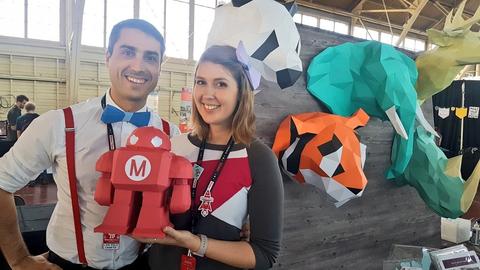
Adrian Ocneanu and Britta Fenton-Evans, founders of Low Poly Crafts, show off some of the paper sculptures offered in kits, including, a robot and animals from the Urban Hunt collection. Even Ocneanu’s bow tie is a paper fashion.
Photo courtesy of Low Poly Crafts
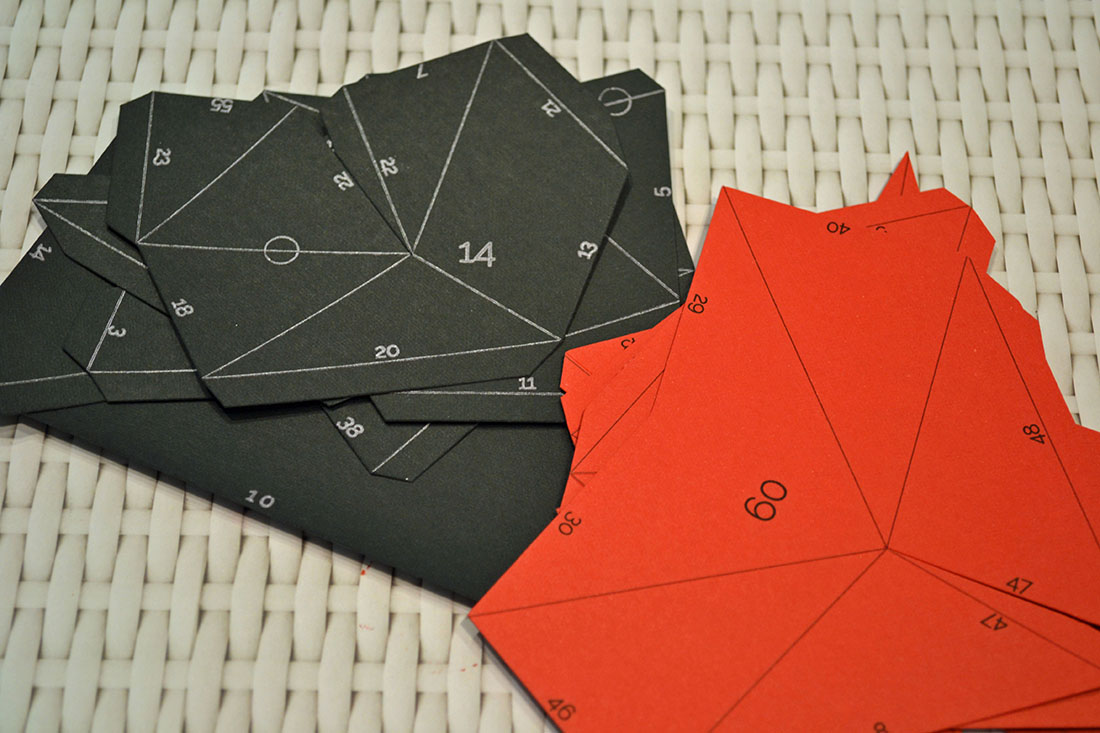
Pieces in the Low Poly Crafts kids are pre-cut, pre-scored and numbered and labeled for easy assembly. These pieces are from the heart on a stand kit.
Photo by Roberta Wax
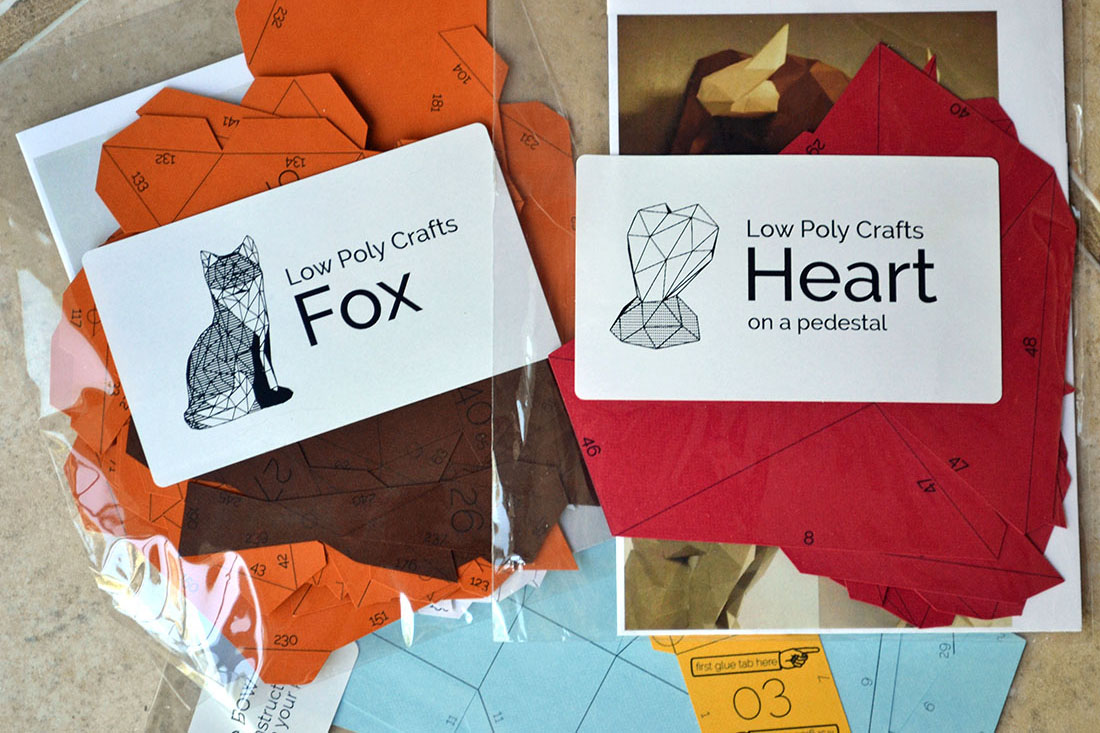
The packed kits all come with labeled and pre-scored pieces, plus a practice piece (in this case a bow tie) to get makers comfortable with the creative process. All you need is glue and patience. The website, www.lowpolycrafts.com, also has instructions and tips.
Photo by Roberta Wax
“Naturally, there was a bit of a learning curve when we started,” notes Fenton-Evans. “And some necessary research and development to find the right cardstock — heavy enough to make a product that would last, but not too heavy to make folding difficult, and with some texture. And, most importantly, we needed the right glue (fast-drying with good hold and not lumpy).”
They put a few kits in a local shop to see what would happen. “At first we were concerned, there was not much product moving,” Fenton-Evans recalls. They offered a few workshops, showing people how easy and relaxing it was to assemble these kits. “All of a sudden people started posting photos (of their DIY animals) online and things exploded,” Fenton-Evans says.
Their foray into business has been deliberately slow, with no specific business or marketing plan, and seeking no loans (except for a small “buffer” loan from Fenton-Evans’s brother to help them create stock for a craft show). “The goal was to grow organically, one thing leading to the next,” says Ocneanu. “It was an after-hours project that ended up taking more and more time.”
They were encouraged by Gareth Davies, owner of Maker House in Ottawa, who told them, “crawl first, then walk, then run.”
“We’re starting to walk right about now,” Ocneanu says.
Davies, whose store sells handmade products from local artisans, saw the first low poly prototypes in early 2016 and offered feedback on packaging, instructions, etc. “We sold the first Deer Head kit on June 30, 2016 and now carry about ten other kits,” says Davies. “The best sellers are the deer, fox, and raccoon, but the new beaver (created at our request for Canada 150, the celebration of Canada’s 150th anniversary this year) has been catching up.”
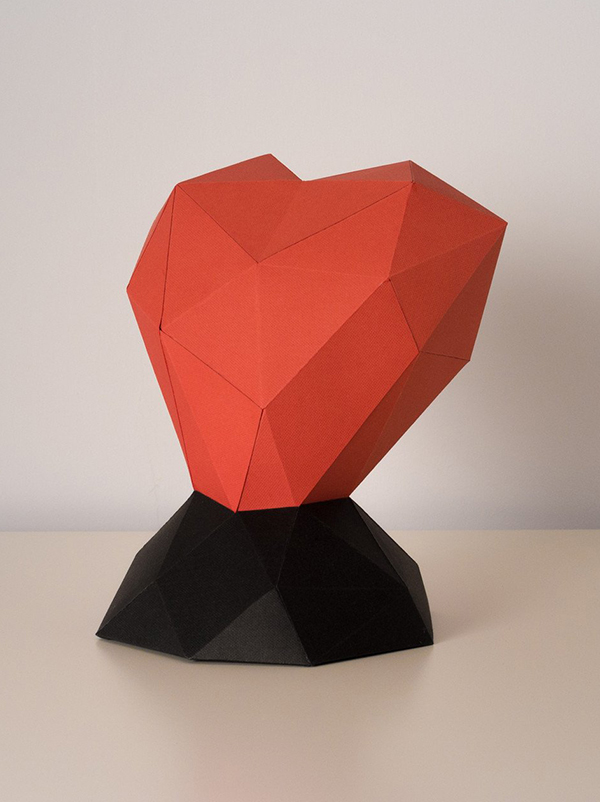
The heart on a stand comes in several colors.
Photo courtesy of Low Poly Crafts.
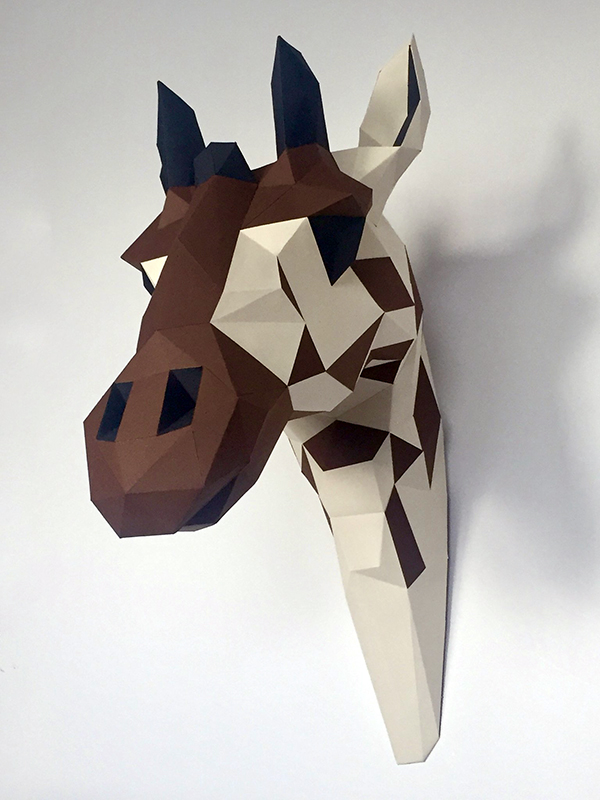
The giraffe, like most of the kits in the Urban Hunt line, is easily hung on a wall.
Photo courtesy of Low Poly Crafts.
The couple is, literally, building their business piece-by-piece, buying equipment as product sells. Their first purchase was a $1,000, 12’ x 24’ industrial printer. With more sales, they bought a machine to cut and score the pieces, which Ocneanu had been doing by hand in the couple’s one-bedroom apartment. “We prioritized,” explains Ocneanu. “If we ran out of paper, that’s a priority. We learned as we went.”
They tried a bit of Facebook advertising and social media give-aways, but saw no significant sales bumps. They’ve been most successful with workshops and craft fairs, where people see or create the art then post their projects on Instagram, Pinterest, Facebook, etc. “People are proud of (their project) when it’s finished, so they do a lot of posting on social media,” Fenton-Evans explains.
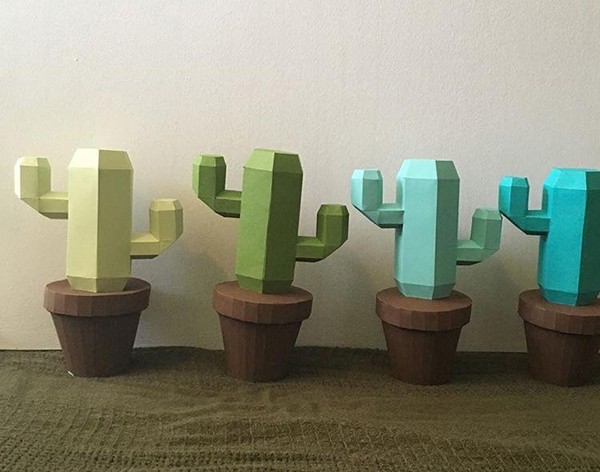
A row of paper-sculpted cacti can decorate any room.
Photo courtesy of Low Poly Crafts.
Growth is a delicate balance. “We cherish the small business vibe and the fact that we make everything with our hands in our workshop,” says Ocneanu. “Maybe we’re naive, and soon may have to make bigger decisions. But not yet.”
The couple, who met on an online dating site, divides the business chores in an almost counter-intuitive way: Ocneanu, who has a bachelor’s degree in electronic engineering, a master’s in civil and environmental engineering, and is working on a PhD in biomedical engineering, does the creative design work.
“We’re building a corpus of knowledge as we go … often learning by trial-and-error,” Ocneanu says. “We are cautiously making sure we don’t sink the boat. The secret is to forgive and learn from our mistakes. We iterate, pivot and try again.”

Roberta G. Wax
contributor
Roberta Wax is an award-winning journalist and imperfect crafter. A former news reporter, her freelance articles and projects have appeared in a variety of newspapers and magazines, from the Los Angeles Times and Emmy magazine to Cloth Paper Scissors, Somerset Studio, Craftideas, Belle Armoire, etc. She has also designed for craft companies. Although she has no art background she was a crafty Girl Scout leader. www.creativeunblock.com


Cool, thanks for writing about this!